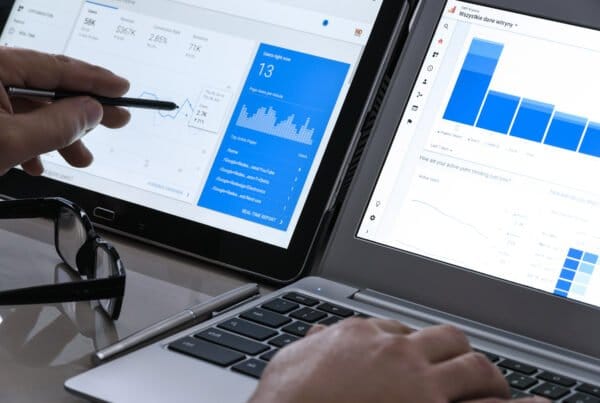Stop and consider your marketing strategy for a second. Who are you targeting? If your answer is “qualified leads” or one of your target customer personas, then you are missing a huge opportunity. Retention is cheaper than acquisition and helps your company build a stronger reputation. You should focus your marketing efforts on converted customers before worrying about attracting new leads.
Why?
Well, existing customers already have a relationship with your brand. They’ve already been through the buyer’s journey and chose to trust your brand through conversion. This is huge.
You have an opportunity to turn these converted leads into repeat customers.
And, you don’t have to take our word for it. Here is how you can measure your customer retention rates to see the value yourself.
How to Measure Customer Retention

If customer retention isn’t part of your strategy, then it is past time to incorporate it. Here are some ways to measure the current value of customer retention and how your company is utilizing this opportunity in your strategy.
Repeat Purchase Rate
How many customers are actually returning to buy from your company a second or third time? It’s difficult to know how successful your current strategy is without first understanding how many customers choose to return.
To find the repeat customer rate:
Divide the number of customers who have ever purchased a second time from you by the total number of customers you have had had. Multiply the number by 100 to achieve the repeat purchase rate.
This gives you more than just your returning customer number—it directly sets your returning customer rate against your newly acquired customer rates to help you consider both options.
Customer Lifetime Value
First and foremost, you have to know the value of your current customers throughout their journey with your brand. If your customer lifetime value is low, you may want to reconsider your approach by improving your retention rate or upselling and cross-selling to existing customers. You can look at customers with higher lifetime values to better understand your audience and their motivations.
To assess customer lifetime value:
Multiply the number of transactions that occur per month, the average order value, the average gross margin and the average customer lifetime. Then, divide that number by the total number of customers in the same given period. Multiply your result by 100, and you have the total customer lifetime value.
As you increase your number of loyal customers, this value will rise.
Net Promoter Score
Are your customers interested in telling others about your company? A happy customer is going to be much more willing to promote your company, and word-of-mouth marketing is a HUGE asset for any company.
People trust their friends and family when they give a recommendation that isn’t bought off by rewards or incentives. And, loyal brand fans are happy to promote their favorite brands to their inner circles. These organic mentions are something you simply can’t afford to miss. You can better understand your customer satisfaction rate with a measurement of who is promoting your company.
To know the net promoter score:
Send out a survey asking your customers to rate the company or experience from 1-10. Pay attention to low scores that mean something is going wrong with your process. Subtract the percent of negative ratings from the percent of positive ratings. The total is your net promoter score.
If you only have half of your audience willing to give you a high review (50%), then you have a net promoter score (NPS) of 0. If you have 60% of your customers reporting a positive experience, then your NPS is 20. The goal is to maintain a higher NPS to help buffer your brand from criticism and encourage returning customers.
Customer Retention Rate
Check the loyalty of your customers by measuring how many stick around past the initial purchase. This number gives you an idea of how many people are giving you more business compared to those who are going elsewhere. A high customer retention rate might signify you have a corner on the market, offer a high-quality product or provide exceptional customer service.
To measure your customer retention rate:
Subtract your total number of customers at the end of a given period from the total customers who purchased throughout the period. Divide that number by the number of customers with your brand at the start of that period. Multiply the number by 100 to achieve your customer retention rate.
This is much easier to calculate if your company follows a subscription-based model. If retention numbers aren’t easy to calculate, you can calculate your loyal customer rate:
Divide your number of repeat customers during a certain time period by the total number of customers during that period. Then, multiply by 100 to get the loyal customer rate.
Try this in more than one period of time to get a feel for the norm here. Some customers return because it’s convenient or they saw an intriguing deal. Eventually, you will want to know how many return customers are truly becoming loyal to return to your company without any outside reason. It can be difficult to tell the difference.
Capitalize on the Value of Customer Retention

Now that you have a better idea of what customer retention is worth and what it looks like in your company, you may have a clearer understanding of your next strategic move. To capitalize on customer retention, you will want to:
- Support customers post-purchase
- Personalize customer experiences
- Provide excellent customer service
- Establish a loyalty program
- Spend time upselling and cross-selling
- Re-engage existing customers with remarketing strategies
- Keep your site updated and refreshed
It’s time to improve your marketing focus and create more brand fans. To really get the most out of your retention, you need a strategy that centers around the customer and keeps the sales cycle going. If you are ready to get started, contact us today and talk to our team











